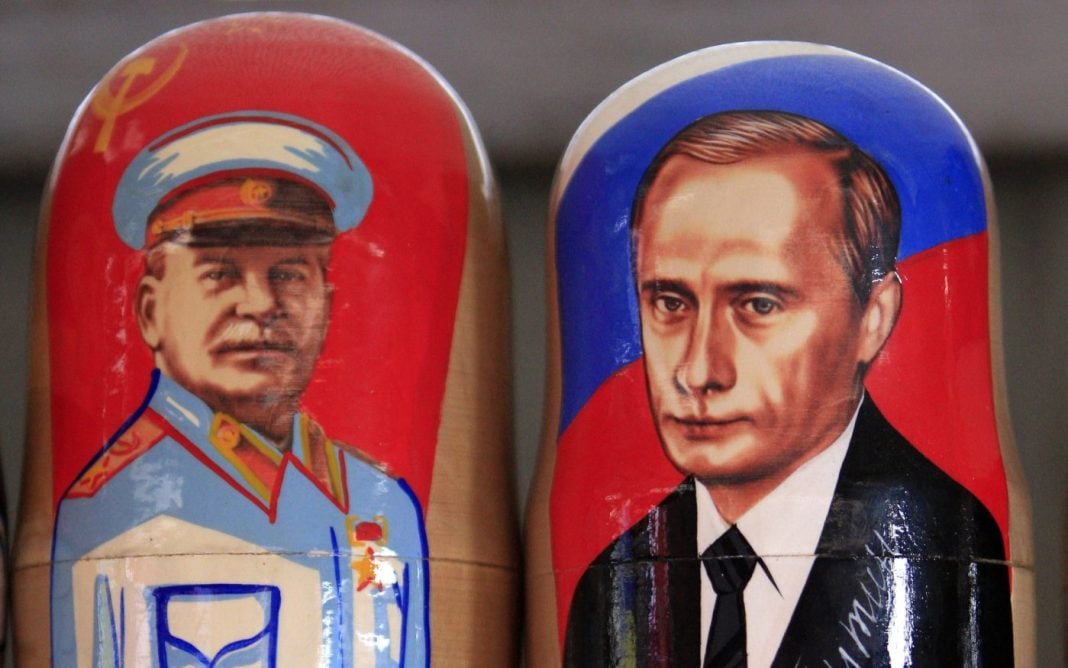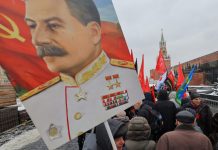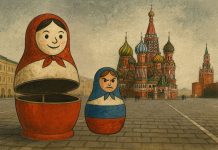The Kremlin’s contempt for human life will be on full display in its May 9 victory celebrations, just as it is on the battlefields of Ukraine.
By Walter Clemens, for CEPA
Masking — hiding both strengths and weaknesses — has long been a Russian forte. The Soviet regime masked its losses in the “Great Patriotic War” for decades. The Putin regime masks its losses in the “Special Military Operation” against Ukraine. Doing so hides the shortcomings of Kremlin decision-making. It also obscures the ugly indifference of Soviet and Russian leaders to human life.
Victory against Nazi Germany was achieved at enormous human cost —estimates range from 27 to 42 million— Soviet citizens and soldiers killed, many times more deaths than suffered by Great Britain or the United States. On May 9, troops and equipment will once again roll through Red Square to celebrate this titanic and unnecessarily extensive loss of life.
Russian analysts of the Putin era, as in Soviet times, have shaded and twisted the facts to make a point. The costs of victory, if not too high, could be portrayed as proof of military and political genius. If very high, they could demonstrate the drive of the Russian/Soviet people to prevail no matter the price. If Soviet war losses exceeded other foes of Nazi Germany, this could prove that the USSR was the primary force in defeating Hitler.
Stalin and his successors hid the war’s death toll for more than 60 years with what historian Igor Ivlev in the Voenno-Istoricheskii Arkhiv (War Historical Archive) in September 2012 termed a “Generalized Lie.” Thus, in 1946 the Stalin regime said that the USSR lost 7 million in the war. Some 20 years after the war, the Supreme Soviet admitted to 20 million dead, of whom 8.7 million were soldiers. In the early 2000s, other Russian estimates put the number of civilians killed at 18 million.
Many of these numbers, Ivlev wrote, undercounted Soviet losses by 50% or more. He found that total Soviet losses from 1941 to 1945 were 38.5 million, of whom 20.5 million were military — not the 8.7 million reported by the Ministry of Defense, although Ivlev accepted that civilian dead amounted to 18 million.
How did he reach this grim reckoning? He checked census data from before and after the war. From Young Communist and Communist Party records, Ivlev learned how many party members donned uniforms and how many survived — less than half. Of 18 million civilian deaths, however, 10.6 million were not party members.
Taking account two factors omitted by Ivlev — emigration and the birth deficit due to absent males— the American historian A, J. Rieber estimated a total population loss of 35 million in his Stalin as Warlord (Yale University Press, 2022).
A much higher number was presented to the State Duma in 2017 by Nikolai Zemskov, then an MP from the ruling United Russia Party. Citing Gosplan documents, Zemskov stated that nearly 42 million Soviet citizens perished in the war —almost one-third of the Russian Federation’s current population. The total population loss of the USSR 1941-45 was more than 52 million, including 19 million military personnel and about 23 million civilians. The total natural mortality during this period probably amounted to more than 11 million —half of them children under age four.
Victory was not glorious. Whether Soviet losses were 16 or 42 million, their magnitude underscores the heavy price paid for survival. Their scale confirmed that Stalin was not only cruel but also a fool.
Having weakened the Soviet body politic, the economy, and military leadership, he first appeased and then allied himself to Hitler, and ignored warnings of an imminent blitzkrieg. The only way Stalin could stop and drive back the Germans was by pushing millions of human beings into the maw of the Nazi war machine. Stalin also benefited from aid delivered by convoys of British and US merchant ships (the UK alone lost 3,000 men dead and 101 ships sunk). One of every two Germans killed by the Red Army died from a US bullet, said a Russian historian.
In Ukraine since the all-out invasion, the Kremlin has returned to its old playbook, masking its bad planning and battlefield defeats by pushing more soldiers — many poorly trained and equipped — into mortal danger. Ukraine’s Armed Forces General Staff reports that 951,960 Russian soldiers have been killed or wounded as of April 30.
President Volodymyr Zelenskyy said on February 16 that over 46,000 Ukrainian soldiers had died on the battlefield, but other sources estimate far higher Ukrainian losses from a much smaller population than Russia’s.
Not glorious, but necessary.
By Walter Clemens, for CEPA
Walter Clemens is Associate, Davis Center for Russian and Eurasian Studies, Harvard University, and Professor Emeritus, Department of Political Science, Boston University. He wrote Blood Debts: What Putin and Xi Owe Their Victims.
Europe’s Edge is CEPA’s online journal covering critical topics on the foreign policy docket across Europe and North America. All opinions expressed on Europe’s Edge are those of the author alone and may not represent those of the institutions they represent or the Center for European Policy Analysis. CEPA maintains a strict intellectual independence policy across all its projects and publications.





